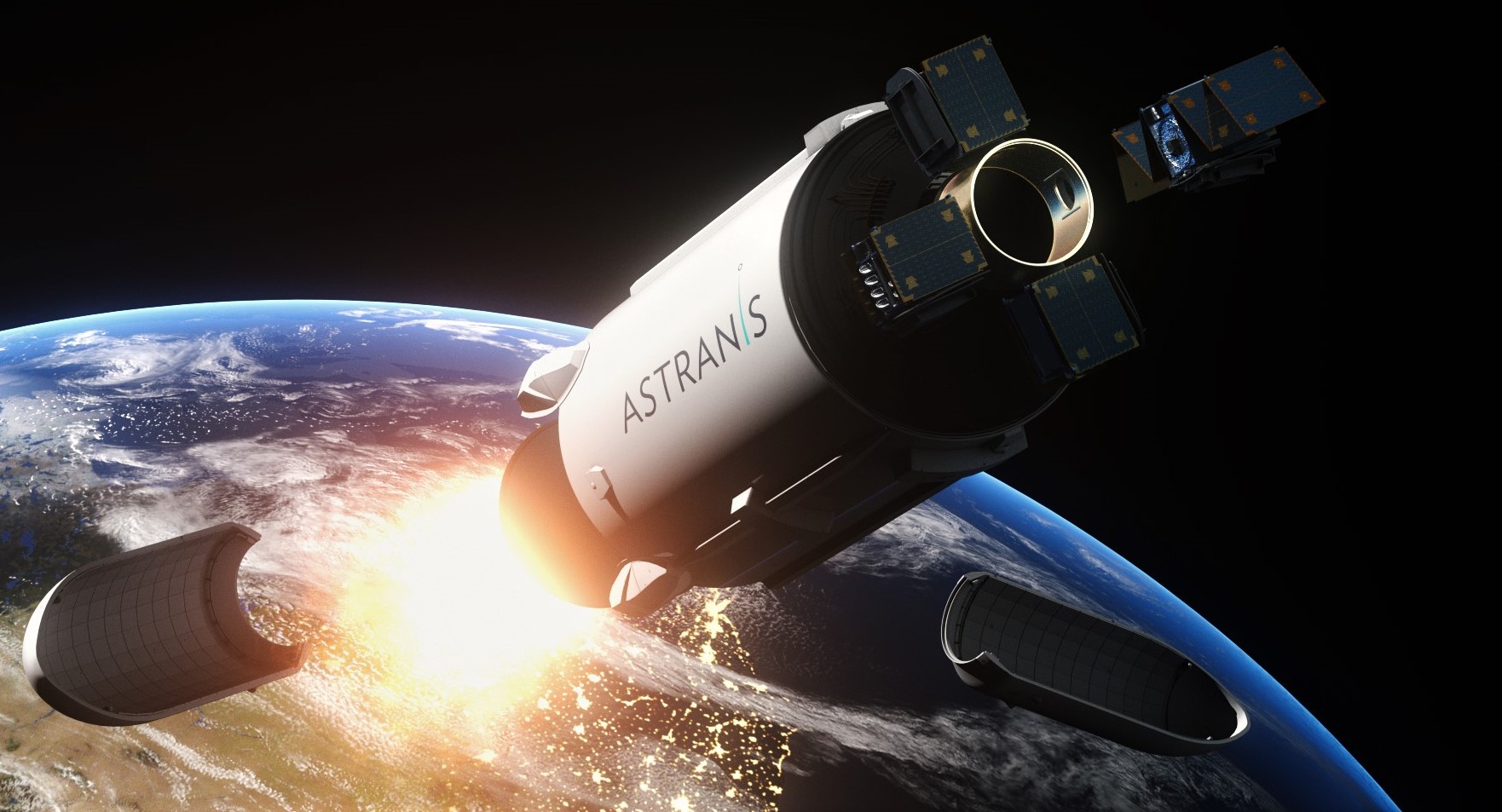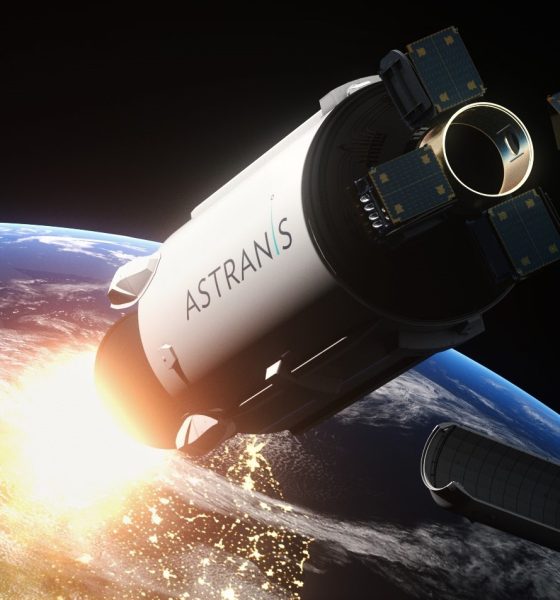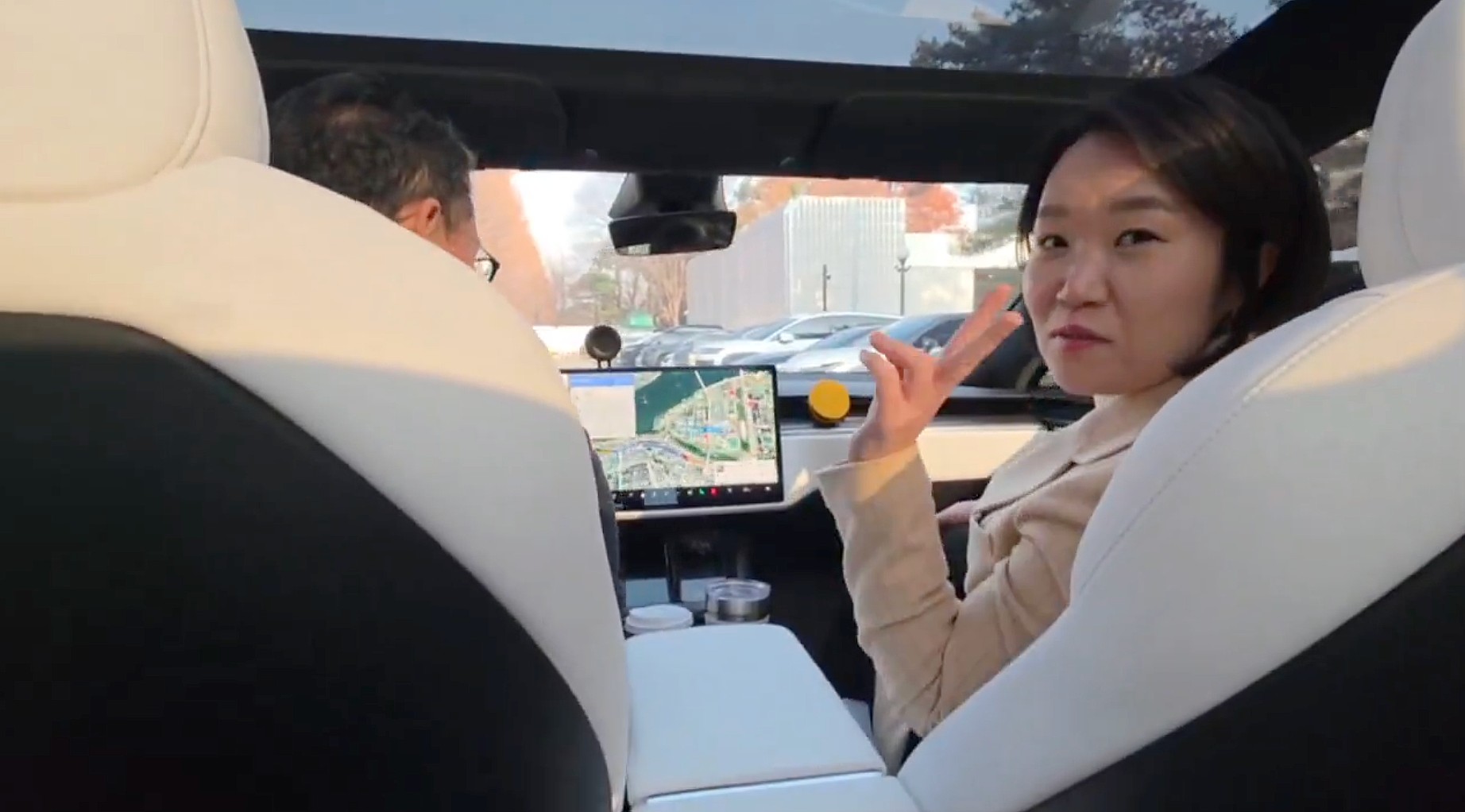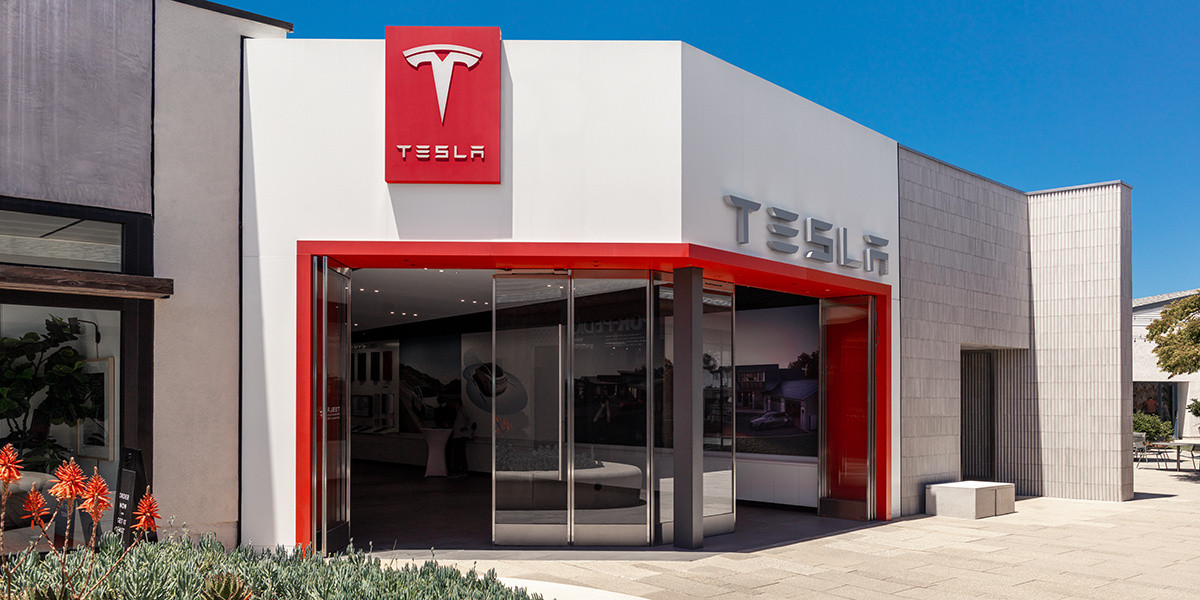

News
SpaceX to launch quartet of mini geostationary satellites in 2023
Startup Astranis has purchased a dedicated Falcon 9 launch from SpaceX for four miniature geostationary communications satellites.
Known as MicroGEO, the comparatively tiny satellites Astranis is building aim to offer prospective customers an alternative to the immense, expensive satellites that dominate modern geostationary (GEO) communications. Where those flagship satellites tend to weigh anywhere from three to seven metric tons (~6,500-15,500 lb) at liftoff, MicroGEO satellites will weigh around 400 kilograms (~900 lb) – at least a magnitude lighter. Astranis also believes it will be able to eke out about 10 gigabits per second (Gbps) of bandwidth from each tiny satellite, giving them a level of performance that could actually be proportionally comparable to or greater than much larger satellites.
While it’s not clear that Astranis is actually selling its MicroGEOs for “1/20th the cost of traditional GEO communications satellites,” as they claim, the startup has found plenty of customers.
As of March 2022, Astranis has secured contracts to build 11 MicroGEO satellites for a range of customers: one for Alaska’s Pacific Dataport, eight for in-flight and at-sea connectivity provider Anuvu, and one or two for Peru’s Grupo Andesat. Astranis says its deal to launch one satellite for Andesat – with an option for a second – is worth more than $90 million. At that price tag, MicroGEO might cost about half as much as a more traditional entry-level GEO satellite but will only offer 10 Gbps for the money. For twice the price, a prospective customer could easily buy a satellite with at least five to ten times the throughput.
In that sense, MicroGEOs are actually more expensive relative to the performance they offer. Their main benefits appear to be a lower cost of entry, significantly lower launch costs, and the ability to dedicate a whole satellite to a relatively small region or niche service. In that sense, MicroGEO’s draw might be comparable to the reason some launch customers prefer a more expensive dedicated launch on a small rocket over a much cheaper launch as one of many rideshare payloads on a large rocket. For that premium, dedicated launch customers don’t have to worry about the logistics of juggling dozens of other satellites, the risk of related launch delays, or the general need to compromise with other passengers.
While MicroGEO satellite might be significantly less cost-efficient than larger alternatives, smaller customers may find paying a premium preferable to having to find or compromise with other customers to avoid wasting any leftover bandwidth. Additionally, in some unique situations, dedicated MicroGEO satellites may actually be several times cheaper for customers. CEO John Gedmark says that for Peru’s Andesat, MicroGEO offers a “factor of three or a factor of four cost decrease…compared to what they’re paying today [to lease less capacity on existing satellites].”
It’s clear that Astranis’ customers see significant value in MicroGEO. On top of Astranis’ current backlog, Gedmark recently revealed that the company is working on deals for “dozens” of additional satellites and believes that “there will be more than 100 Astranis satellites in active service” by 2030. That means that Astranis’ unique Falcon 9 contract is likely to be the first of many. For perhaps as little as $50 million, a SpaceX Falcon 9 rocket will launch four MicroGEO satellites at once. The relatively tiny payload – likely less than two tons (~4400 lb) – will allow Falcon 9 to launch into a more energetic geostationary transfer orbit (GTO), significantly reducing the amount of time the MicroGEOs will need to reach operational orbits.

News
Tesla Full Self-Driving gets sparkling review from South Korean politician
“Having already ridden in an unmanned robotaxi, the novelty wasn’t as strong for me, but it drives just as well as most people do. It already feels like a completed technology, which gives me a lot to think about.”

Tesla Full Self-Driving got its first sparkling review from South Korean politician Lee So-young, a member of the country’s National Assembly, earlier this week.
Lee is a member of the Strategy and Finance Committee in South Korea and is a proponent of sustainable technologies and their applications in both residential and commercial settings. For the first time, Lee was able to utilize Tesla’s Full Self-Driving technology as it launched in the country in late November.
Her thoughts on the suite were complimentary to the suite, stating that “it drives just as well as most people do,” and that “it already feels like a completed technology.”
드디어 오늘, 서울에서 테슬라 FSD 체험 했습니다.
JiDal Papa님의 모델S 협찬에 힘입어^^ 파파님 정말 감사합니다.
국회 -> 망원시장 -> 홍익대 -> 국회 복귀 코스였고요.
이미 무인 로보택시를 타봐서 그런지 신기함은
덜했지만, 웬만한 사람만큼 운전을 잘하네요.이미 완성된 기술이라고… pic.twitter.com/8pAidHBpRG
— 이소영 국회의원 (Soyoung Lee) (@im_soyounglee) December 17, 2025
Her translated post says:
“Finally, today I got to experience Tesla FSD in Seoul. Thanks to the Model S sponsored by JiDal Papa^^, I’m truly grateful to Papa. The route was from the National Assembly -> Mangwon Market -> Hongik University -> back to the National Assembly. Having already ridden in an unmanned robotaxi, the novelty wasn’t as strong for me, but it drives just as well as most people do. It already feels like a completed technology, which gives me a lot to think about. Once it actually spreads into widespread use, I feel like our daily lives are going to change a lot. Even I, with my license gathering dust in a drawer, don’t see much reason to learn to drive a manual anymore.”
Tesla Full Self-Driving officially landed in South Korea in late November, with the initial launch being one of Tesla’s most recent, v14.1.4.
It marked the seventh country in which Tesla was able to enable the driver assistance suite, following the United States, Puerto Rico, Canada, China, Mexico, Australia, and New Zealand.
It is important to see politicians and figures in power try new technologies, especially ones that are widely popular in other regions of the world and could potentially revolutionize how people travel globally.
News
Tesla dispels reports of ‘sales suspension’ in California
“This was a “consumer protection” order about the use of the term “Autopilot” in a case where not one single customer came forward to say there’s a problem.
Sales in California will continue uninterrupted.”

Tesla has dispelled reports that it is facing a thirty-day sales suspension in California after the state’s Department of Motor Vehicles (DMV) issued a penalty to the company after a judge ruled it “misled consumers about its driver-assistance technology.”
On Tuesday, Bloomberg reported that the California DMV was planning to adopt the penalty but decided to put it on ice for ninety days, giving Tesla an opportunity to “come into compliance.”
Tesla enters interesting situation with Full Self-Driving in California
Tesla responded to the report on Tuesday evening, after it came out, stating that this was a “consumer protection” order that was brought up over its use of the term “Autopilot.”
The company said “not one single customer came forward to say there’s a problem,” yet a judge and the DMV determined it was, so they want to apply the penalty if Tesla doesn’t oblige.
However, Tesla said that its sales operations in California “will continue uninterrupted.”
It confirmed this in an X post on Tuesday night:
This was a “consumer protection” order about the use of the term “Autopilot” in a case where not one single customer came forward to say there’s a problem.
Sales in California will continue uninterrupted.
— Tesla North America (@tesla_na) December 17, 2025
The report and the decision by the DMV and Judge involved sparked outrage from the Tesla community, who stated that it should do its best to get out of California.
One X post said California “didn’t deserve” what Tesla had done for it in terms of employment, engineering, and innovation.
Tesla has used Autopilot and Full Self-Driving for years, but it did add the term “(Supervised)” to the end of the FSD suite earlier this year, potentially aiming to protect itself from instances like this one.
This is the first primary dispute over the terminology of Full Self-Driving, but it has undergone some scrutiny at the federal level, as some government officials have claimed the suite has “deceptive” naming. Previous Transportation Secretary Pete Buttigieg was vocally critical of the use of the name “Full Self-Driving,” as well as “Autopilot.”
News
New EV tax credit rule could impact many EV buyers
We confirmed with a Tesla Sales Advisor that any current orders that have the $7,500 tax credit applied to them must be completed by December 31, meaning delivery must take place by that date. However, it is unclear at this point whether someone could still claim the credit when filing their tax returns for 2025 as long as the order reflects an order date before September 30.

Tesla owners could be impacted by a new EV tax credit rule, which seems to be a new hoop to jump through for those who benefited from the “extension,” which allowed orderers to take delivery after the loss of the $7,500 discount.
After the Trump Administration initiated the phase-out of the $7,500 EV tax credit, many were happy to see the rules had been changed slightly, as deliveries could occur after the September 30 cutoff as long as orders were placed before the end of that month.
However, there appears to be a new threshold that EV buyers will have to go through, and it will impact their ability to get the credit, at least at the Point of Sale, for now.
Delivery must be completed by the end of the year, and buyers must take possession of the car by December 31, 2025, or they will lose the tax credit. The U.S. government will be closing the tax credit portal, which allows people to claim the credit at the Point of Sale.
🚨UPDATE: $7,500 Tax Credit Portal “Closes By End of Year”.
This is bad news for pending Tesla buyers (MYP) looking to lock in the $7,500 Tax Credit.
“it looks like the portal closes by end of the year so there be no way for us to guarantee the funds however, we will try our… pic.twitter.com/LnWiaXL30k
— DennisCW | wen my L (@DennisCW_) December 15, 2025
We confirmed with a Tesla Sales Advisor that any current orders that have the $7,500 tax credit applied to them must be completed by December 31, meaning delivery must take place by that date.
However, it is unclear at this point whether someone could still claim the credit when filing their tax returns for 2025 as long as the order reflects an order date before September 30.
If not, the order can still go through, but the buyer will not be able to claim the tax credit, meaning they will pay full price for the vehicle.
This puts some buyers in a strange limbo, especially if they placed an order for the Model Y Performance. Some deliveries have already taken place, and some are scheduled before the end of the month, but many others are not expecting deliveries until January.








